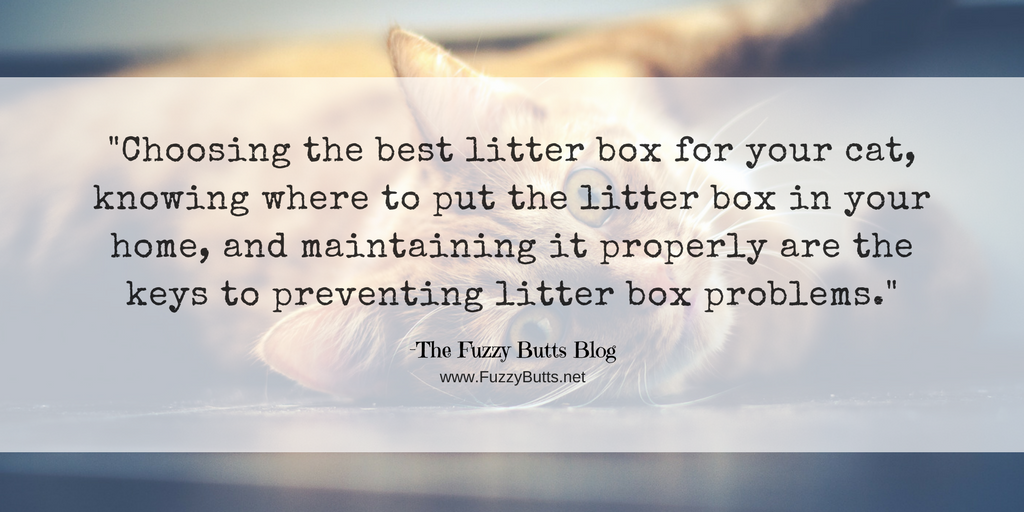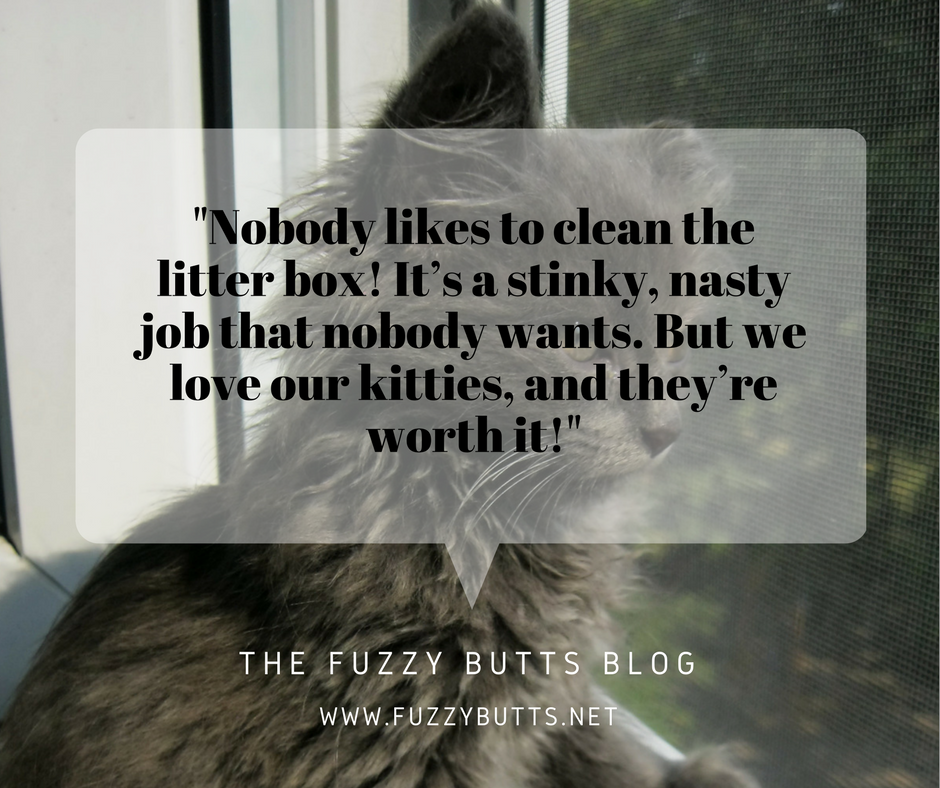Nobody likes to clean the litter box! It’s a stinky, nasty job that nobody wants. But we love our kitties, and they’re worth it! By taking the time to choose the best litter box for you, your home and your cat, you can take a lot of the unpleasantness out of the chore. Taking the time to find the best litter box for your cat and the best place for the litter box in your home can prevent most litter box problems before they even start. It can also make the chore of cleaning the litter box much more bearable.
Not only have I had indoor cats since childhood, but I’ve also worked in grooming shops, veterinary hospitals and boarding facilities for all of my adult life. Over the years, I’ve had a lot of firsthand experience with cats and their finicky litter box habits.
Today, I want to share with you my top tips for choosing the best litter box. I am also going to offer some advice on where to situate the litter box in your home and how to best maintain it.
Which One Is The Best Litter Box For Your Cat?
One thing you will notice when you start researching litter boxes is that they all get mixed reviews. What works great for one cat and owner doesn’t work at all for the next. Cats are fussy creatures, and in the end, the best litter box for your cat will be the one that he likes the best, is easy to clean, and suits your home.
The Basic Litter Pan
The best thing about the basic litter pan is the price! This litter pan costs less than $10 and comes in two different sizes; small and medium. It features a highly polished finish that makes it odor and stain-resistant, as well as super easy to clean. This is the best litter box for training young kittens because the low sides make it easier for them to get in and out.
Reviewers of this basic litter pan say that its smaller size makes it perfect to use in a crate or playpen, but it is probably too small to use as the only litter box in the house for an adult cat. It would make a great second litter box to tuck up into a small corner somewhere in your house.
The High Sided Litter Box
A high sided litter box is the best litter box for cats who are very messy and like to dig. The price is still very affordable at right around $10. The sides of this litter box should keep most cats from kicking their litter out of the box. If you have a kitty who is always missing the litter box because his rear end is hanging over the edge, the high sides will help with that problem, too.
Purchasers of this high sided litter box appreciate the smooth finish that makes it easy to clean. They find it to be a sturdy, well-made litter box. Their all-around favorite thing about the box is the high sides that help prevent the mess! However, some users commented that this box wasn’t roomy enough for very large cats, so keep that in mind when ordering.
The Hooded Litter Box
A hooded litter box is the best litter box for keeping odors contained. The hood keeps the litter out of sight and prevents cats from kicking the litter out of the box or peeing and pooping over the side of the box. Keep in mind that some cats may not like the enclosed feeling of a hooded litter box. It is also important to scoop this type of litter box often because cats have very sensitive noses and odors can build up inside this type of box.
One reviewer was thrilled with how deep the pan is on this hooded litter box. She stated that her previous covered litter pan was too short and her cat was always urinating in the seam between the pan and the hood.
The Sifting Litter Box
A sifting litter pan comes with a sifting pan and two regular pans. You just lift out the sifter, shake until all the litter falls thru, and then dump the waste into a trash bag. Place the sifter back into the empty box and dump the litter in from the other pan. The empty pan gets cleaned and then goes on the bottom for storage until next time. Clumping litter works best in this type of pan. The antimicrobial protection that is built into this litter box is a nice touch for added odor control.
Users were excited to report that this sifting litter pan makes their clumping litter last longer because it is sifted so thoroughly each time. They also love the fact that the sifting pan keeps litter from sticking to the bottom of the pan. No more scooping, and no more scraping!
The Rolling, Self-Cleaning Litter Box
A rolling, self-cleaning litter box is a step up from the hooded litter pan and the sifting litter pan, offering the benefits of both. This litter box is cleaned by rolling it to the right and then back again. A screen on the inside of the box separates the waste from the litter. The waste is collected in a reusable tray that pulls out for easy disposal. This is the best litter box for those who want an affordable, easy to maintain option.
Reviewers of this rolling, self-cleaning litter box say that this is the first “truly easy to clean” litter box they have ever had. It’s a great choice if you prefer to handle the litter as little as possible and hate scooping.
The Disposable Litter Box
A disposable litter box is a great option for travel, and for those who don’t want to deal with scrubbing out the litter box. Any type of litter will work fine in this litter box; just scoop as usual and throw away the entire box when you’re done with it. They will stay dry for weeks and they will not shred or leak. They are made from recycled paper, so they are very biodegradable.
This disposable litter box is made with baking soda to provide extra odor protection and comes in three different sizes; small, regular and jumbo. Users report that their litter lasts longer in this box because of the better airflow. They find them to be very sturdy, as well.
The Automatic, Self-Cleaning Litter Box
The automatic, self-cleaning litter box is a great option for those who don’t want to deal with scooping at all. It has a rake that is activated by the motion of your cat in the litter box. The rake collects the waste into a disposable waste tray for easy disposal. Through personal experience, silica type cat litters will work best with this type of litter box because it stays very dry and doesn’t get sticky.
Reviewers of this automatic, self-cleaning litter box loved that they could go out of town for a couple of days without having to pay someone to come clean out the litter box. If you go longer than a couple of days though, someone will have to empty the waste receptacle. It is also a great choice for multiple cat households with room for only one litter box because it is always kept clean.
Because of the lower sides of this box, users with messy cats that like to kick litter out of the box recommend putting this litter box inside of a large plastic tote. Cut a hole in the front for a door and hole out the back for the cord. Leave the lid on or off depending on your cat’s preference. Talk about a low maintenance, worry-free litter box! What a great idea!
Toilet Training Your Cat
One way to completely avoid needing a litter box is to toilet train your cat. The process involves purchasing a kit that comes with litter box rings that fit inside the toilet. The rings progress smaller and smaller in size as your cat gets more used to using the toilet. The rings are intentionally flimsy to help the cat get used to balancing on the toilet seat. Flushable cat litter is required for this system.
Toilet training your cat will require a lot of patience on the part of you and your cat. Be prepared for a mess in the beginning because your cat will probably kick litter all over the bathroom while learning. It can also be inconvenient to use this system if you only have one bathroom. You will have to remove the litter box ring in order to use the toilet.
This toilet training kit received very mixed reviews. Many people were very successful, while others reported that their cat wanted nothing to do with it. One successful user recommended waiting 2-3 weeks to switch ring size instead of the one week that the manufacturer recommends.
Wouldn’t it be nice to never have to clean or scoop the litter box ever again? It could be worth a try!
Where Is The Best Place To Put Your Cat’s Litter Box?
The best place for your cat’s litter box is in a quiet, low traffic area. Your cat will feel safer in the litter box if he has a good view of the entire room. Be sure there’s nothing near the area that might scare your cat, such as a noisy washing machine.
It might seem like a genius idea to put the litter box inside a cabinet or other small area to keep odors contained, but that is not always best from your cat’s perspective. Odors can build up in small areas and cats have very sensitive noses. You don’t want your cat to be put off by the smell of his litter box or he might just find somewhere else to go.
Basements, garages, attics, and other out of the way places are not a good idea either, especially for elderly cats or young kittens. If they must travel a great distance to get to the litter box they may not make it in time.
Be sure to spread the litter boxes around in different areas of your home. Each cat will prefer one area over another.
How Many Litter Boxes Do You Need?
There should be one litter box per adult cat, plus one extra. If you have more than one level in your home, you need to keep at least one litter box on each level.
How Often Should You Clean Your Cat’s Litter Box?
You will need to scoop all solids and wet litter out of the litter box daily, and maybe two or three times a day if you have multiple cats. Wearing some disposable gloves and a mask will make this task more bearable. The litter box should be emptied and cleaned with mild detergent regularly. With cheaper or non-clumping litters you will need to change out the litter once a week. If you are using a quality clumping litter you might be able to go as long as a month, depending on how many cats you have. Be sure not to leave any perfume or chemical scents behind because your cat may be put off by the scent and refuse to use his litter box. Be sure the litter box is completely dry before refilling.
When choosing your cat litter, buy only unscented litter. Use only natural, unscented litter box deodorizers like baking soda or enzymes. Cats do not like perfume or chemical scents.
How Much Litter Should You Put In Your Cat’s Litter Box?
Cats like to be able to dig a hole when they go to the bathroom, so make sure there is a good 3-4” inches of litter in the box. You also want to make sure that the urine has time to clump together before it hits the bottom of the box, otherwise, you will have to scrape the bottom of the box every time you change it.
Why Does My Cat Poop Or Pee Outside Of The Litterbox?
Most of the time, a dirty litter box causes elimination problems. However, if you have been following the recommendations in this article and your cat develops a sudden elimination problem, it’s time for a call to the veterinarian. Certain illnesses like cystitis or bladder stones could be causing pain for your cat when he uses the litter box, and your cat may be associating that pain with his litter box.
Hopefully, this advice will make it easier for you to choose the best litter box for your cat, and give you some good tips on where to put your cat’s litter box and the best way to maintain it. Feel free to post any questions in the comments below.











